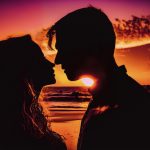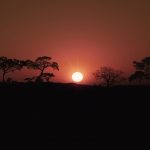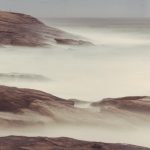If your question is: what are the best types of cameras and types of lenses to buy? This answer is not so straightforward, as everything will depend on the purpose and what you expect in return. The cameras are classified according to their functionality, size, focus and other aspects seen below.
However, in relation to their size, they are classified as small, medium and large format. While the small ones are light and easily portable, the medium ones have larger sensors. Although more robust, they produce better quality images, surpassed only by large format ones, more suitable for photographic studio work, given their physical proportions.

Among the options, you will be able to choose not only a sophisticated smartphone, to produce instant photos, but also one among the several options of models that may or may not have their alternating lenses.
In this context, there are compact cameras, superzooms, mirrorless and DSLR (crop and full-frame).
Compact Cameras | Types of Cameras
Compact cameras are small and light. Known as point-and-shoot (point and shoot) they are available on the market in an extensive variety of options. They have good image resolution and are ideal for non-professional records.
They leave something to be desired in low light environments, with slower shutters and smaller sensors. Due to the advancement of technology applied to smartphones, these camera models have been overcome and are increasingly in disuse.
Superzoom | Types of Cameras
Bridge or Superzoom equipment is similar to the prices of compact cameras and the image results offered by DSRL. They allow manual adjustments and operate well in low light situations, however, the fact that they have a fixed lens, makes different experiments impossible. Recommended for semi-professional use due to its low cost and practicality in operating modes.
Mirrorless | Types of Cameras
In Mirrorless cameras, the light hits the sensor directly, not previously passing through a mirror that reflects it. That is why they are cheaper and lighter than DSLRs and, in terms of image quality, they offer great results.
Their lenses can be switched, however, the fact that they do not have an optical viewfinder forces the photographer to use a small digital viewfinder (available on some models) or just the LCD monitor. This characteristic causes not only a higher consumption of batteries, but also discomfort to see the image produced by the camera correctly, since the ambient light reflects on the LCD monitor, especially in very bright environments. Another disadvantage is the fact that they have exclusive lenses, which do not fit in other cameras.

DSLR | Types of Cameras
Finally, DSLR (Digital Single Lens Reflex) cameras range from the simplest models (called "input") to the most sophisticated with advanced operating options. These equipments differ from the others in that they present a set of operations that will return in a higher quality image, and for that reason they turn to professional use.
The DSLR models have two types of sensor, the full frame being comparable to the old 35 mm film and the APS-C (or crop), a smaller proportion sensor, which partially captures the image when using the same lenses and distances focal. They have an optical viewfinder and LCD monitor, where the professional chooses where he wants to see the image. The set of internal mirrors allows you to reproduce the image in full, while the other models reproduce an approximate result to that seen on the LCD. The main characteristic of DSLRs is, in addition to the fidelity in recording and reproducing images, their universal system of interchangeable lenses.

The video below can help you choose the right equipment for you.
Lenses
Now that you know that camera models may or may not have their lenses switched, you can already know the types of lenses available and their functions, for each type of situation.
The lens is the entrance door of the light for capturing the image on the camera's sensor. It can be said that they are “the eyes” of the camera. It is a set of lenses accommodated and protected inside a generally metallic body, or a resistant material.
The ability to zoom in on cameras is defined with the lens and is popularly called zoom. This characteristic is also among the main points of choice of equipment. The cameras offer two types of zoom: optical and digital.
Focal distance
This is a valuable piece of information, especially when purchasing equipment with fixed lenses, as optical zoom refers to the ability of the camera to zoom in by enlarging the composition to be photographed, using the internal mechanisms for positioning the camera lens. It offers a real approach, without great distortions of the image, for using mechanical devices like analog cameras. Digital zoom refers to the camera's ability to zoom in and out of composition, using the increase in pixels of the subject framed in the camera's viewfinder. The equipment's sensors recreate the image, with, in most cases, distortions that compromise the image. final resolution for photo printing.
However, you will see below, the different types and uses of interchangeable lenses available on the market. They are responsible for framing the image, its sharpness and the focal length, which is fundamental as a criterion of choice.
The focal length of the lens is the distance between the optical center of the lens and the sensor, where the image is recorded. The shorter this distance in millimeters, the greater the risk of distortion in the images, such as the fish eye lens. There are also the measurements that are closest to what is seen by the human eye, without distortions, such as the 50 mm lenses and those capable of registering very small objects, called macro.
The focal length of a lens determines not only the minimum distance between the lens and the captured subject, but also the perspective of how it will be received by the sensor. Thus, a shorter focal length ensures greater depth of field.
Fish Eye Lens - Types of Lenses
It is a type of large ocular lens. Because it has a coverage area of up to 180 °, it is capable of wide registrations, but with an enormous capacity to distort the image, leaving it rounded. Used in small environments, recorded in its entirety, or, to cover an area where your movement is restricted and you have no way to get away from what will be photographed. Its focal length is between 8 mm and 15 mm
Wide Angle Lens - Lens Types
Due to the wide open angle, it has a great depth of field, however, it maintains the risk of distortion for highlighted subjects, very close to the objective. Therefore, it is used for landscapes and large areas. Focal length between 8 mm (fish eye) and 35 mm
Normal Lens - Types of Lenses
It is the closest to the reality of human eyes, without risk of distortions. Its most common focal length is between 40 mm and 50 mm. It is ideal for portrait photography, leaving the person in the foreground and neglecting the background, which may or may not be blurred
Telephoto Lens - Lens Types
It is the one capable of registering clearly, without great distortions, objects that are distant from the photographer. Your focal length
is above 70 mm. It is the type of lens that most closely approximates the photographer, objects or scenes at great distances. Therefore, its advantage is to be able to reach subject far, or to cut scenes with precision

Macro Lens - Lens Types
Used to photograph very small objects with great sharpness and definition of details, but, due to its very shallow depth of field, it can lose the focus point more easily.
Zoom Lens - Lens Types
They are lenses that allow you to adjust the focal length for different depths of field, in a single device. For this reason, they are the most common lenses and are widely used by novice photographers.
Therefore, to choose the right type of lens, the objective must be considered, so you will invest in suitable lenses to carry out your work with more targeted investments.
Anyway, we will meet in the next article on photographic technique.
So, did you like the article and want to contribute a coffee of thanks? Make your contribution through the QR Code below. Help the Foto Blog that helps you. Any value is welcome! A coffee is R$2 here, for example.

Related articles
| Make long exposure | Types of cameras | Light the principle (part 1) | Light the principle (part 2) |
Other links
| Photographer | Saquarema | Photo | Photography | Online Gallery | FotoBlog | Claude Monet | Photographic Technique | Color Photographic Technique | Quality of a photo | What is Photography? | The Role of the Sensor | Pricing | DSLR | Compact | Lens Types | Photographic Technique 5 |





